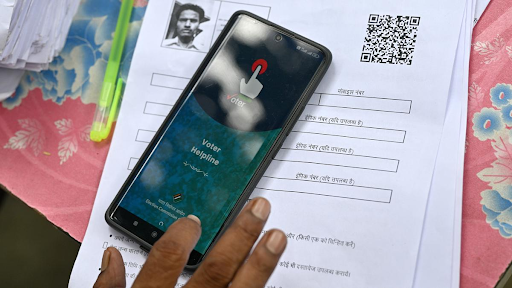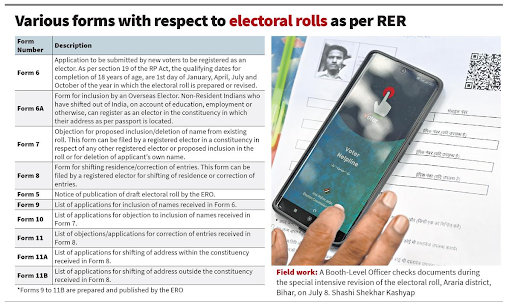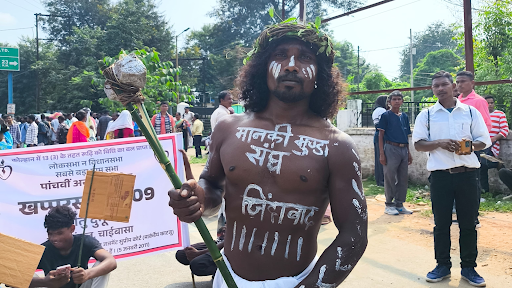



The Election Commission of India ensures electoral integrity through structured forms under the Registration of Electors Rules, 1960. Forms 6, 6A, 7, and 8 empower citizens to register, update, or correct voter details, ensuring transparent, accurate, and inclusive electoral rolls for a robust democracy.

Copyright infringement not intended
Picture Courtesy: THE HINDU
A clean and accurate electoral roll is the bedrock of free and fair elections, the Election Commission of India (ECI) is constitutionally mandated to prepare and maintain these rolls to ensure every eligible citizen can exercise their right to vote.
|
Read all about: WHY NEED ELECTORAL REFORM IN INDIA l SPECIAL INTENSIVE REVISION IN BIHAR l ONE NATION ONE ELECTION l DYNASTIC POLITICS IN INDIA l 130TH CONSTITUTIONAL AMENDMENT BILL |
The power to prepare and revise electoral rolls is vested in the ECI under Article 324 of the Constitution and governed by Section 21 of the RPA, 1950.
In Bihar, before the Assembly elections, the EC conducted a Special Intensive Revision (SIR) of electoral rolls, with 1st July as the qualifying date.
All electors needed to submit enumeration forms and proof of birth & citizenship. Draft rolls were published, and citizens were allowed to file claims (Form 6), objections (Form 7), and other electoral forms, to ensure name in the voter list.
The Registration of Electors Rules, 1960 (RER, 1960) prescribes several forms that citizens and officials use for preparing, updating, and correcting the electoral rolls.
|
Form Number |
Official Purpose |
Who Should Use It? |
|
Form 6 |
Application for New Voter Registration |
Any Indian citizen who has turned 18 years of age on the qualifying date but is not yet registered as a voter. |
|
Form 6A |
Application for Registration of Overseas Electors |
An Indian citizen who is living abroad and has not acquired the citizenship of another country. This allows them to register and vote in the constituency mentioned on their Indian passport. |
|
Form 6B |
Letter of Information of Aadhaar Number for the purpose of Electoral Roll Authentication |
An existing voter who wishes to voluntarily link their Aadhaar number with their Voter ID (EPIC) card. This is part of the ECI's drive to clean electoral rolls and eliminate duplicate entries. |
|
Form 7 |
Application for Objection or Deletion of Name in Electoral Roll |
This form has two main uses: 1. To object to the inclusion of a name in the electoral roll (if you believe the person is ineligible). 2. To request the deletion of your own name or the name of a deceased or permanently shifted family member from the electoral roll. |
|
Form 8 |
Multi-purpose Application Form for Registered Voters |
This is a consolidated, "one-stop" form for existing voters to request various changes. It can be used for: 1. Shifting of Residence: To change your address within the same or to a different constituency. 2. Correction of Entries: To correct errors in your name, age, gender, address, or photograph in the electoral roll. 3. Replacement of EPIC: To apply for a new Voter ID card if the original is lost, stolen, or damaged. 4. Marking as a Person with Disability (PwD): To request to be marked as a Person with Disability to avail of special facilities at the polling booth. |
Form 2: Statement of Ordinary Residence by members of the Armed Forces, personnel of the State Armed Police serving outside their state, and Central Government employees serving outside India.
Form 3: Statement of Ordinary Residence by a person holding a declared office in India.

Source: THE HINDU
|
PRACTICE QUESTION Q. Discuss the significance of the Special Intensive Revision (SIR) of electoral rolls in strengthening the democratic process in India. 150 words |
EVMs are devices used to electronically record and count votes. They consist of a Control Unit (with the polling official) and a Balloting Unit (for the voter). A voter presses a blue button next to their chosen candidate on the Balloting Unit to cast their vote.
VVPAT is an independent system attached to the EVM that allows voters to verify their vote. After a voter casts their vote, a paper slip with the candidate's serial number, name, and symbol is displayed in a transparent window for about seven seconds. This slip then falls into a sealed drop box.
The Model Code of Conduct (MCC) is a set of guidelines issued by the ECI for political parties and candidates. The MCC comes into effect from the time an election schedule is announced and remains active until the electoral process is complete. It prevents the misuse of official position for campaigning and prohibits activities that could incite communal hatred or involve corrupt practices.








© 2025 iasgyan. All right reserved